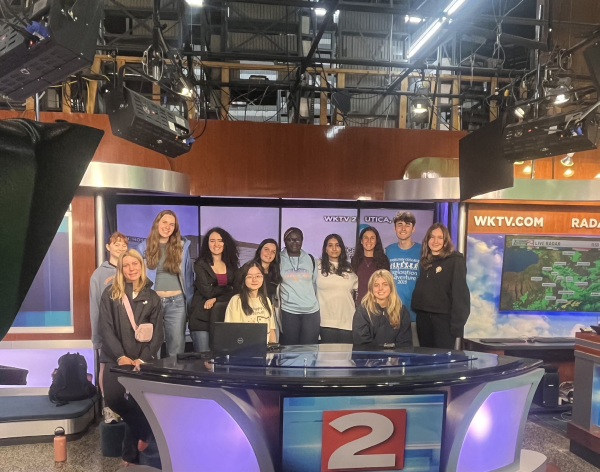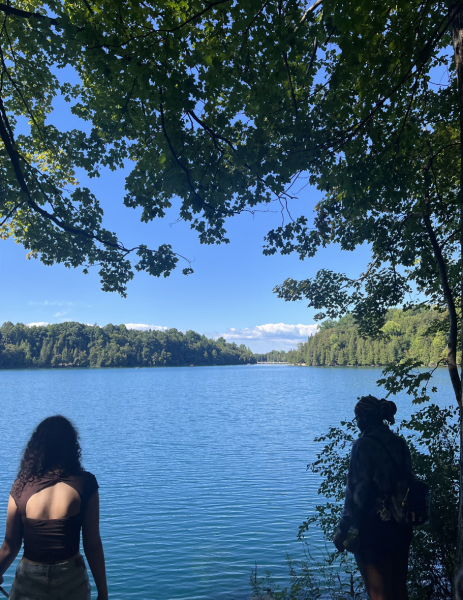
The first-year orientation at Hamilton College involves hundreds of students, dozens of orientation leaders and over 180 boxes of food. The week-long program takes nine months to prepare, with countless people working behind the scenes. Or, as a fourth-year Orientation Leader Julia Afsar-Keshmir said, “[the orientation coordinators] Tessa, Sarah, Amy and Andrew are Santa Claus, and [the orientation leaders] are the elves.”
Tessa Chefalo is responsible for the orientation schedule, food, transportation, supplies and online forms. Chefalo works alongside her colleagues, Sarah Skoy, Andrew Jillings and Amy Adams to facilitate a total of 61 trips.
These staff members also work with over five-hundred students, separating them by zip code and creating a gender balance between groups so that all students have an equal opportunity to form new connections with a diverse set orientation peers.
Hamilton’s orientation support staff also plays an integral role in guiding new students, helping them move into their dorms and creating a positive and welcoming environment. “It was a really rewarding experience,” said staff member Elizabeth Jacoby ’26. “Orientation was a really meaningful time for me to get to know Hamilton and I remember the people on the golf carts and leaders being so excited to be there. I was really honored to be able to do that for the new generation.”
Additionally, Chefalo explained the reasoning behind orientation’s no-phone policy and no access to showers, describing her objective to “remove a distraction” and “organize down time”, arguing that phones would otherwise distract from the trip, and showers would consume hours of the day.
First-year Grace Maley said the conditions of this trip left her in her “worst state,” yet she acknowledged that students’ access to amenities will only improve, leading to a more positive mindset in the future.
First-year Josie Shuman described the experience as “ripping off the [college] bandaid.”
Dylan Bucksner-Schulz, third-year Orientation Leader, asserted that meeting each person’s needs “takes basically the entire year, including nine months of planning.”
A large component of this planning is choosing and training the orientation leaders. The interview process for new leaders has three extremely selective rounds.
After selections are made, training begins in May with four days of camping for all of the leaders. This, Afsar-Keshmir said, is designed to be a run-through of the orientation camping experience.
Finally, a few days before new students arrive, the leaders receive specialized training in Title IX, cultural humility, sustainability and more.
But how is each leader assigned to their “perfect” trip? In short, they’re not. While they rank their top five trips, orientation leaders are chosen primarily based on their compatibility with one another. The orientation staff matches new and experienced leaders in a careful process that Afsar-Keshmir and Bucksner-Schulz agree makes for a perfect success.
From orientation leaders, to those that trained them, to those that fed them, countless individuals worked for months to ensure that orientation would run smoothly.
On the first day of orientation, all of the new students recieved a speech about “being here now.” Well, now we know how we got here.
